
Reunion Island: day-to-day logistics in the middle of the Indian Ocean
Report
Gerald Victoire is a trucker on Reunion Island. He regularly gets stuck in traffic with his Actros. However, an ambitious construction project is set to change all that very soon.
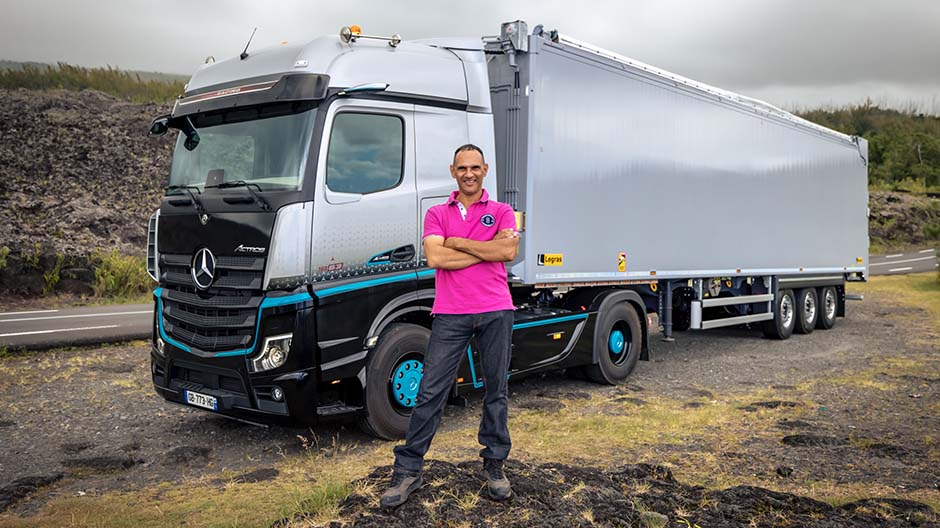
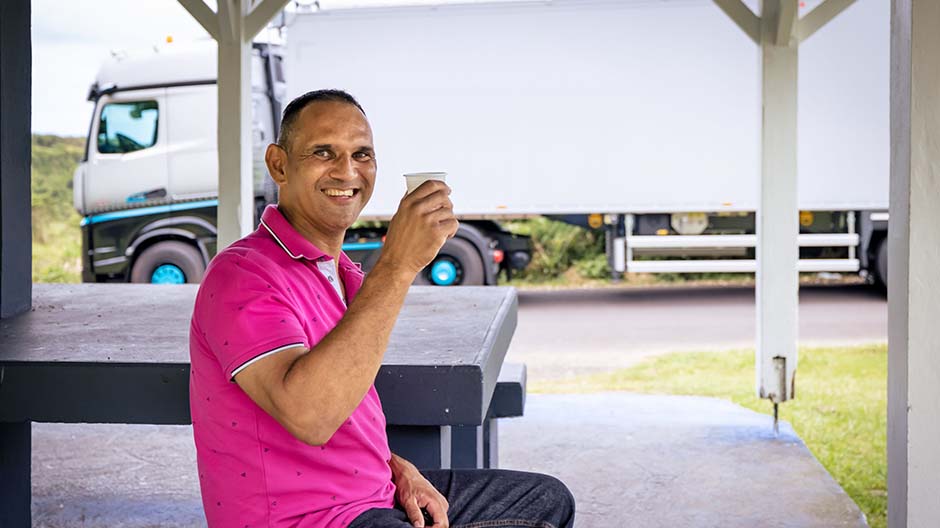
On one side of the road, rugged volcanic rocks loom high, while on the other side, the waves of the Indian Ocean lap up against the shore. Gerald Victoire slows down his Actros. “There's guaranteed to be traffic around the corner”, he says. However, this time, vehicles are moving smoothly along the coastal road towards Saint-Denis. It's when Gerald reaches the capital of the island with his truck that he hits the expected traffic jam.
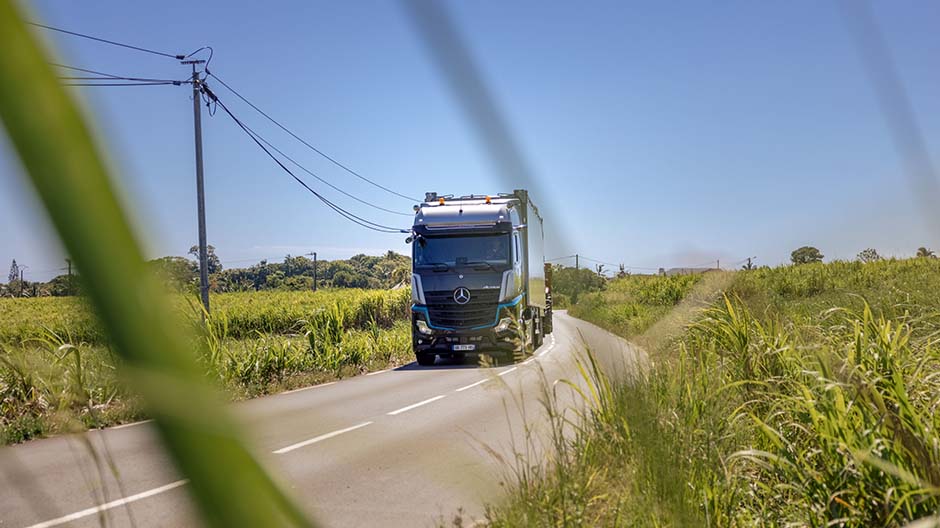
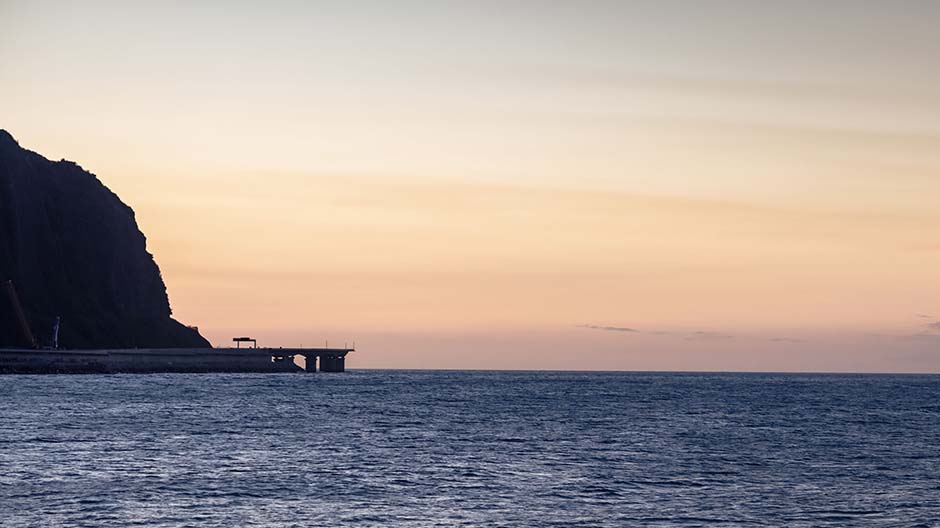
“Île de la Réunion" – Reunion Island – is a French overseas department located 2,000 kilometres off the east coast of Africa – and the name says it all: the island was uninhabited until the 17th century, when it started to be populated by French settlers. Over the centuries, inhabitants from all continents and a huge diversity of ethnic groups have joined them. “We islanders are particularly proud of this diversity and, above all, the peaceful coexistence of the island's inhabitants”, says Gerald Victoire.

“Rock falls can happen at any time.”
– Gerald Victoire, driver at JS Transports
However, there is one reunion that everyone would happily do without: in the densely populated northwest of the island, congested roads and traffic jams have become a regular scene. The coastal road between the cities of Saint-Denis and Saint-Paul is a bottleneck: a total of 250,000 of the island's 860,000 inhabitants live here. Lying between the two cities is Le Port, the country's main port: all goods that arrive here need to be distributed around the island. And that's not always easy. “It sometimes takes more than two hours to drives the 30 kilometres between the two cities”, sighs Gerald Victoire.
He looks back and forth between the MirrorCam displays. Then the 46-year-old looks up at the steep rock face while Active Drive Assist helps the Actros 1863 cruise slowly but safely through the traffic jam. “Rock falls can happen at any time”, says Gerald Victoire, who has been a truck driver for 26 years.
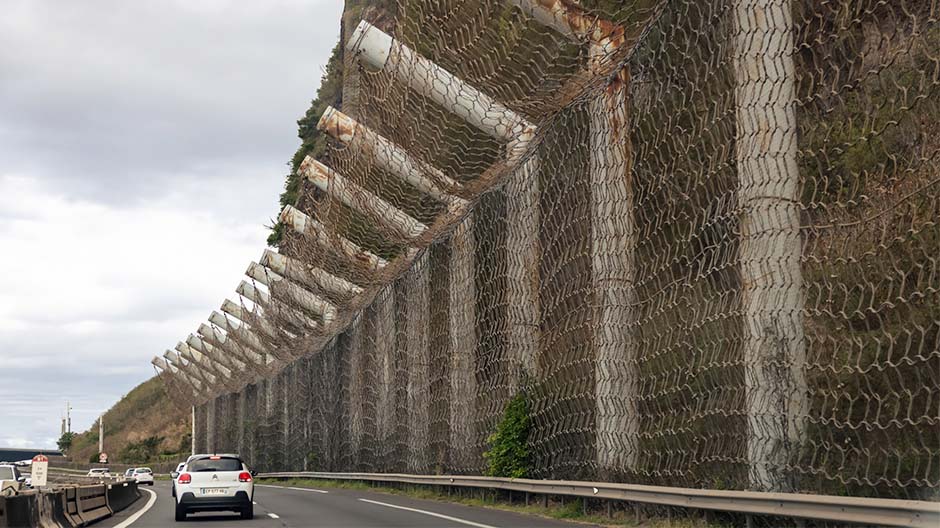
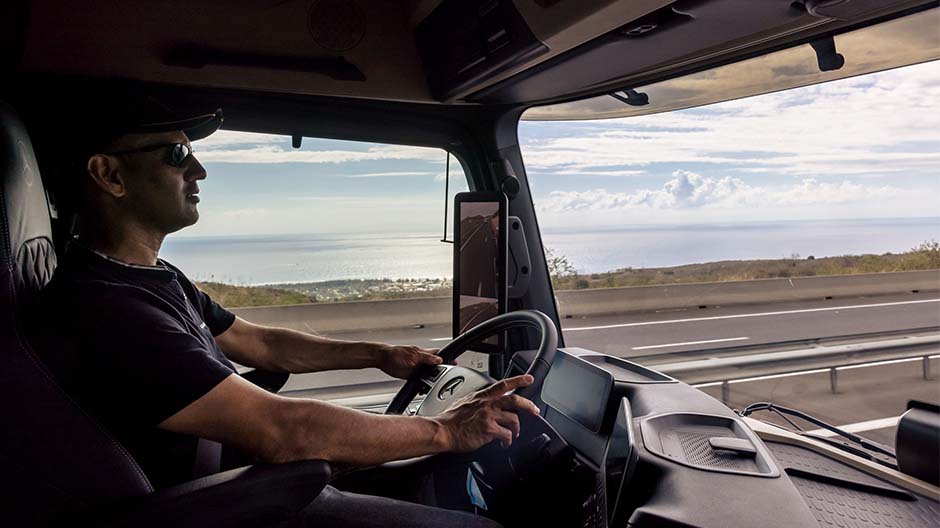
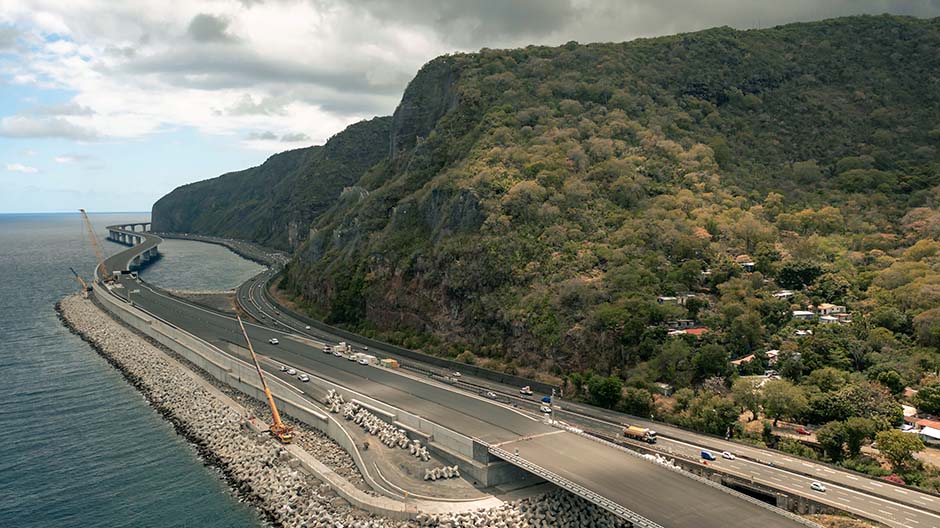
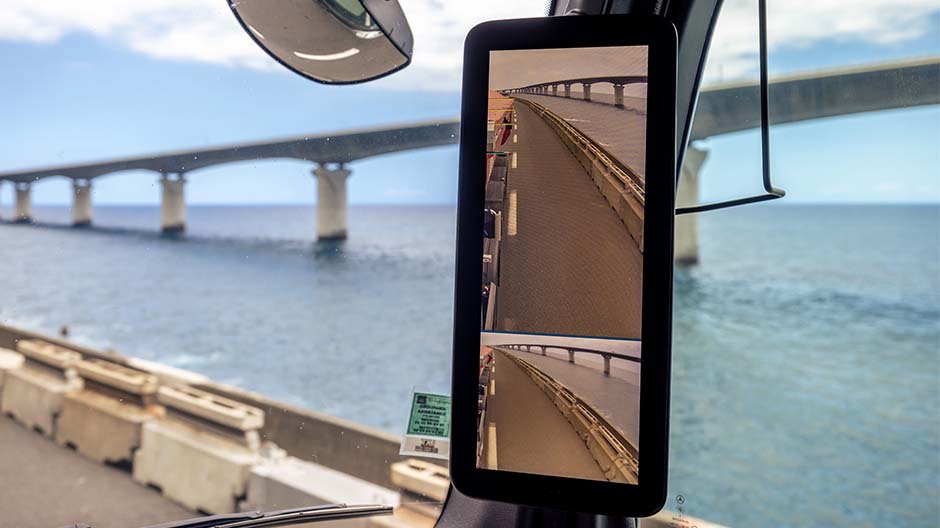
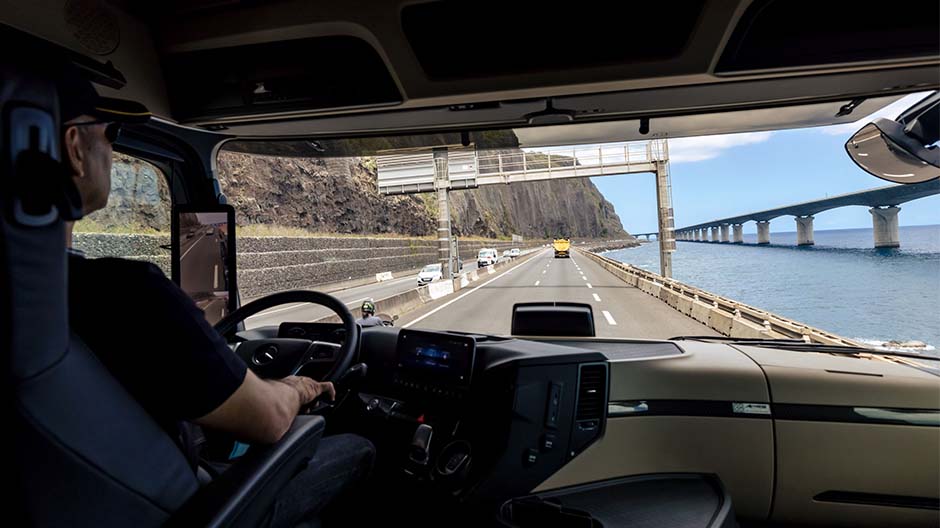
Fickle weather and road closures.
Huge steel structures with thick nets reduce the risk of rock falls but there have still been several serious accidents caused by rocks on this route. “We also have an active volcano, the Piton de la Fournaise, on the island.” And on top of all that, during cyclone season, waves of up to ten metres in height crash onto the road... as can be seen in many videos on the internet. “Don't be deceived by the current calm conditions”, says Gerald Victoire. He has known the island and its fickle weather well from a young age. Between December and March, it rains so heavily here that Reunion holds the world record for the highest levels of precipitation within three days (3,929 mm). “During this time, the rainfall tumbles down off the rocks in real torrents”, reports the trucker. And from the other side of the road come the waves. The result: frequent closures of this section of the route – and of course traffic jams. This means that the main supply route for heavy-duty transport is closed, and there's no alternative road through the highlands.
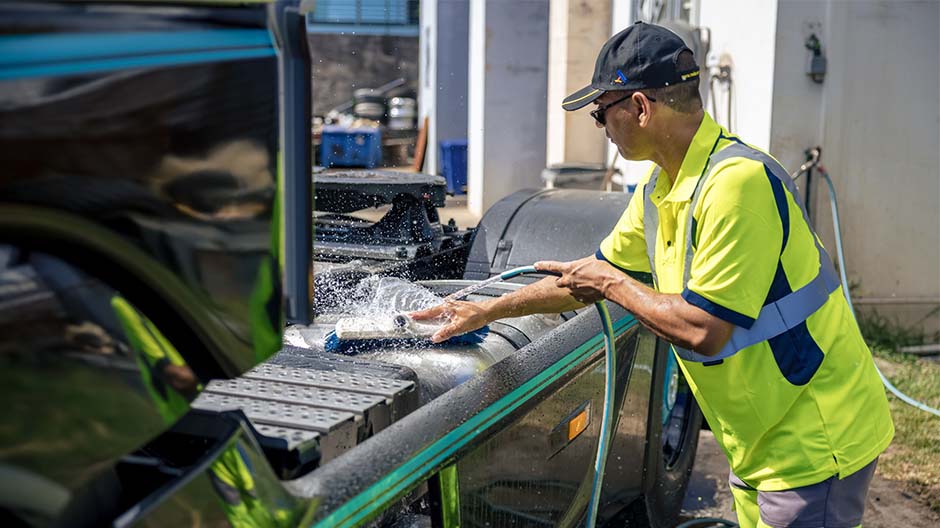
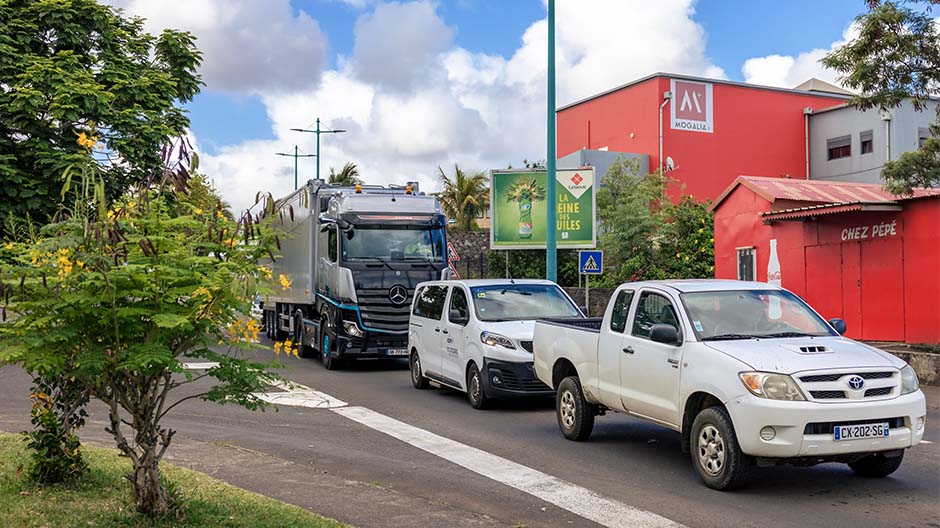
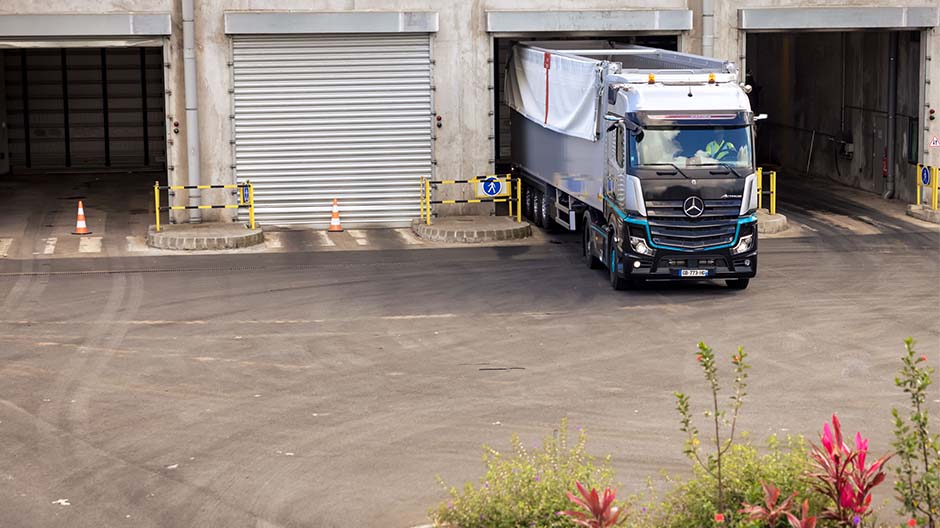
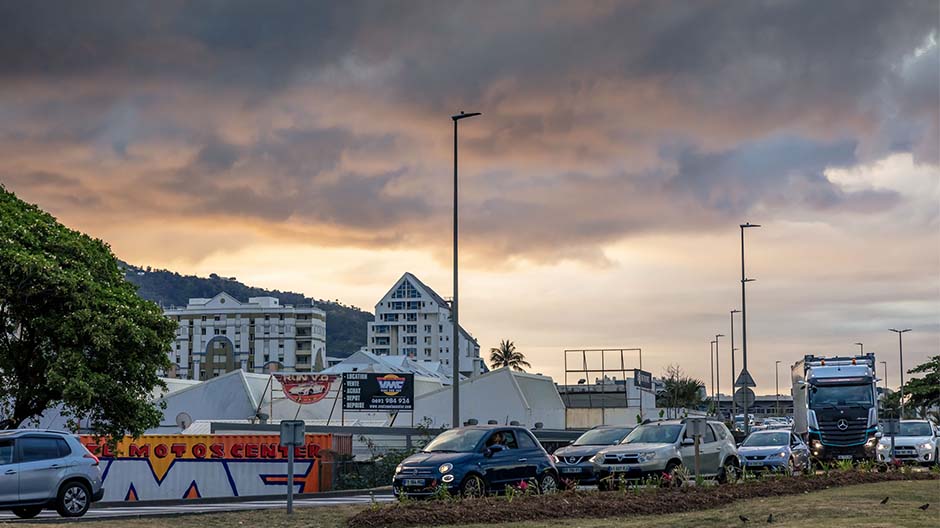
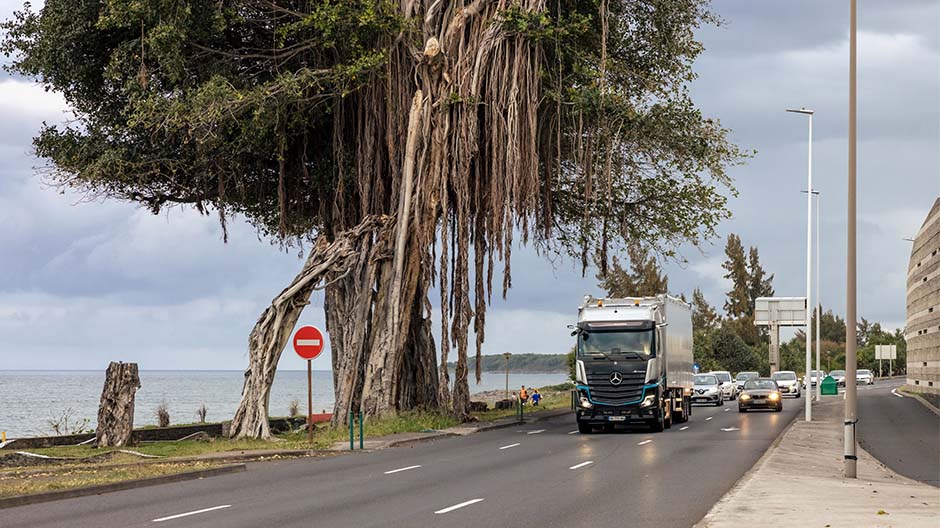
Road construction project brings hope.
“That’s why we're pinning all our hopes on this bridge”, says Gerald, pointing through the windscreen towards the sea. Ahead, a massive construction site looms parallel to the Littoral route. This is the most expensive motorway project in French history.
But until the route is completed and vehicles are allowed to drive across it, Gerald’s boss Jimmy Soucramanien has to find other ways to avoid the traffic jams. And so, he has strategically distributed his fleet of 35 vehicles across the entire island so that not every truck has to pass through the bottleneck at Saint-Denis too often. Whether they be delivering post, food and beverages, building materials or recycling waste, Gerald and his colleagues at JS Transports are on the road all over the island.
This article contains additional material (videos, images and reports etc.) for registered RoadStars members. In order to experience the article to the full, you need to log in with your RoadStars account or register for one free of charge.
Become a RoadStar and gain access to exclusive content and campaigns!
Login for RoadStars members
Not yet a member? Join RoadStars now
Obtain exclusive access to exciting events and activities which only RoadStars can offer.
Join RoadStarsNouvelle Route du Littoral.
The Nouvelle Route du Littoral is set to stretch for 12.5 kilometres and 5.4 kilometres have been earmarked to be a bridge – the longest viaduct in France. It has been designed to be completely cyclone-resistant, able to withstand wind speeds of up to 150 kilometres per hour. It will be built 300 metres off the coast with three lanes in each direction, rising high above the roaring surf. Six voussoir sections will also be incorporated. The scale of the project is reflected in the construction costs: around 1.6 billion euros are expected to go into this construction project, which is funded by the Réunion region, the French government and the European Union.
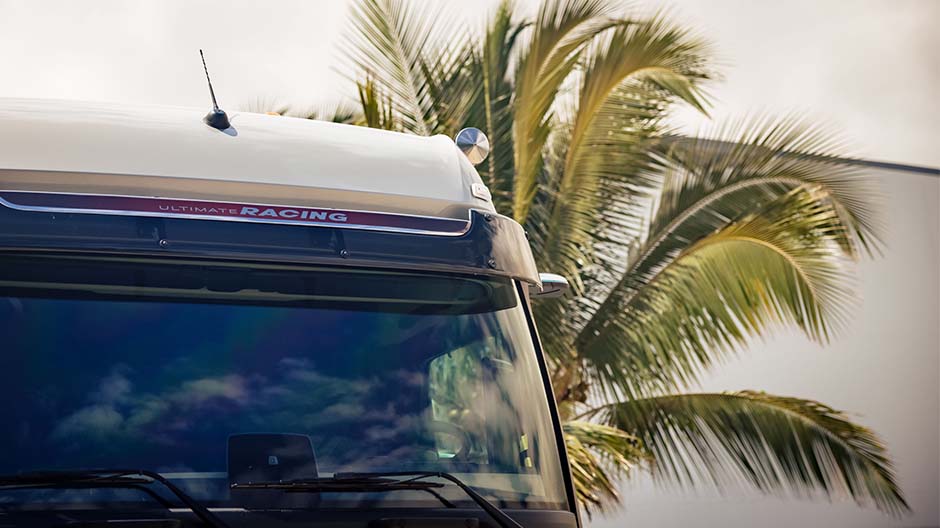
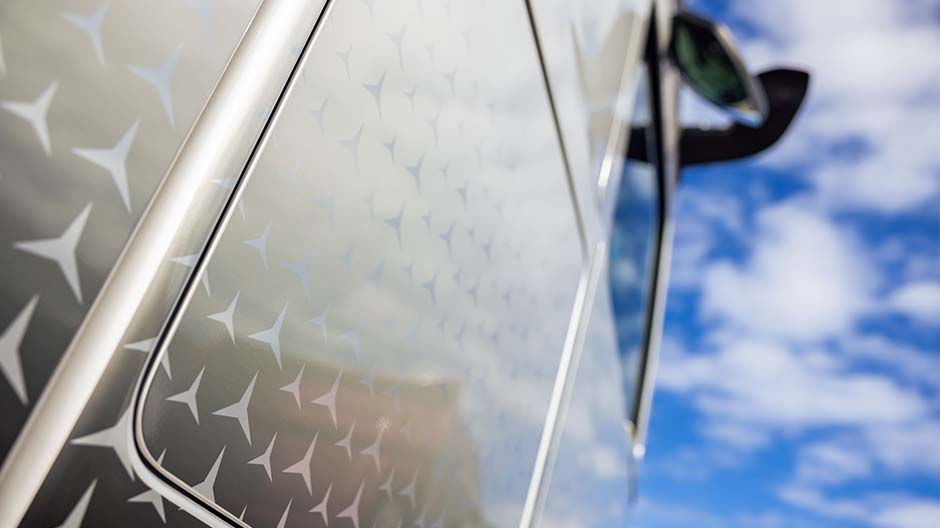
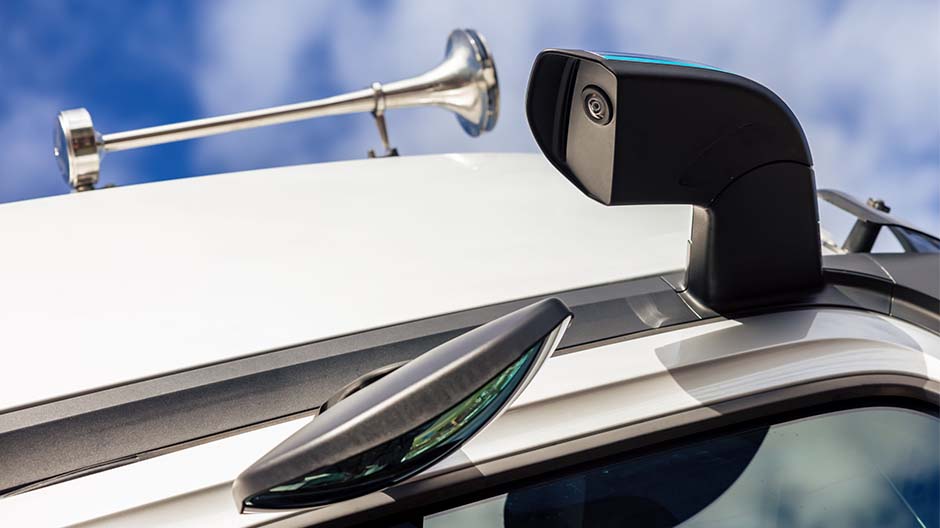
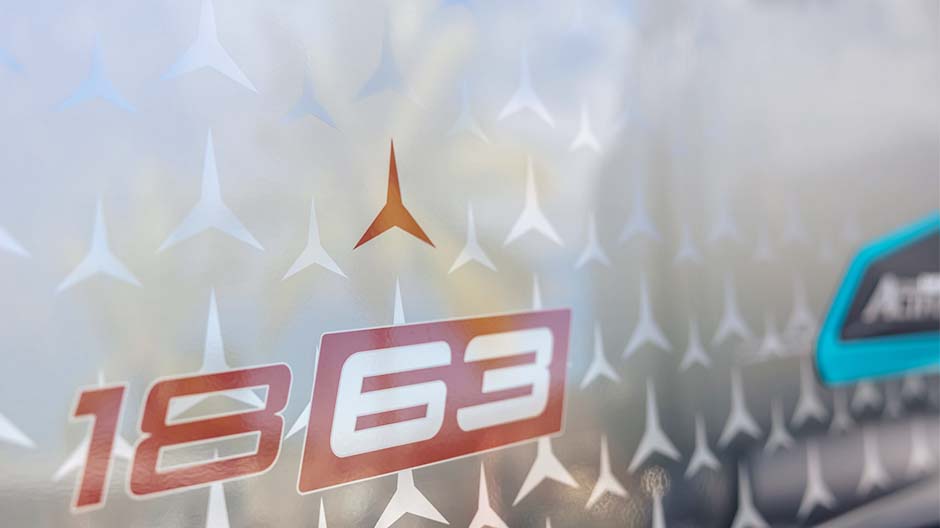
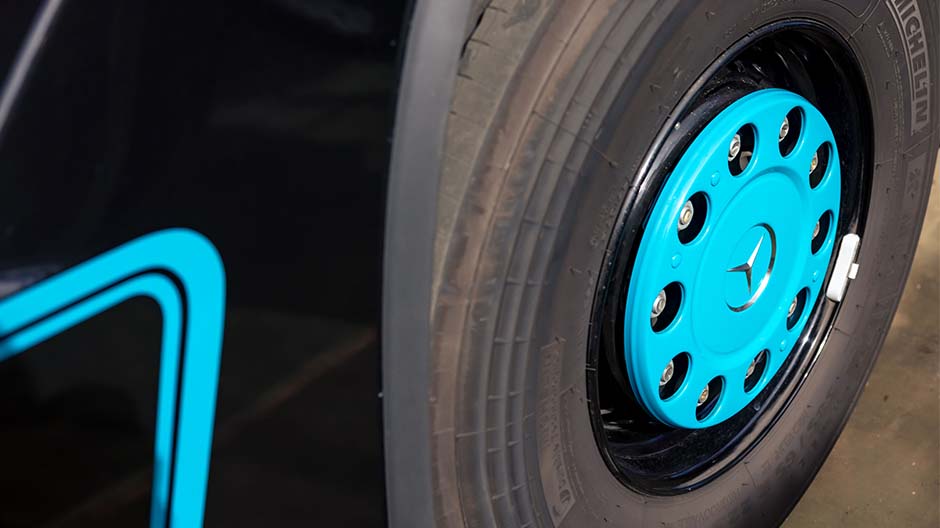
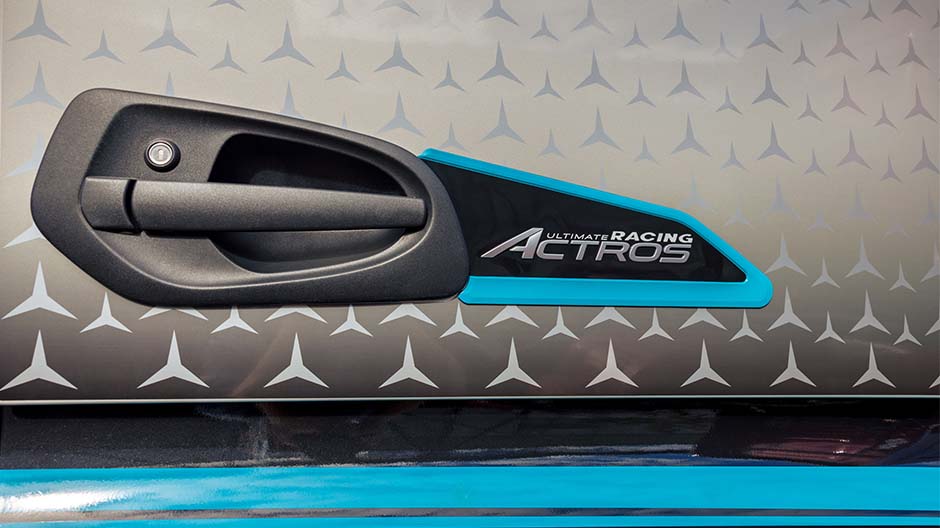
“We transport everything that could possibly be transported”, says Gerald Victoire, who has been working at JS Transports for twelve years. He is currently on his way to swap trailers – he unhitches the tipping semitrailer, replacing it with a walking floor trailer, and then sets off again on his way to a recycling company with a load of household waste.
One of 50.
But he mustn't forget to leave time for a quick truck wash! The truck allocated to Gerald Victoire for his trips is a real eye-catcher: the Actros Ultimate Racing Edition special model. There are just 50 vehicles in this range, which was available exclusively on the French market. Two of them made it to Reunion Island, and one of these is the very truck driven by Gerald Victoire. With exclusive paintwork reminiscent of the Mercedes‑AMG Petronas team, leather equipment and a top-of-the-range engine, Gerald has a lot of fun in his Actros! “The power is always there when you need it”, says the passionate trucker. Gerald even has a bed at his disposal should he need it! “But I haven't had to sleep in the truck on Reunion yet”, he says, pointing mattress behind him that is still in its packaging. “The island's pretty small.”
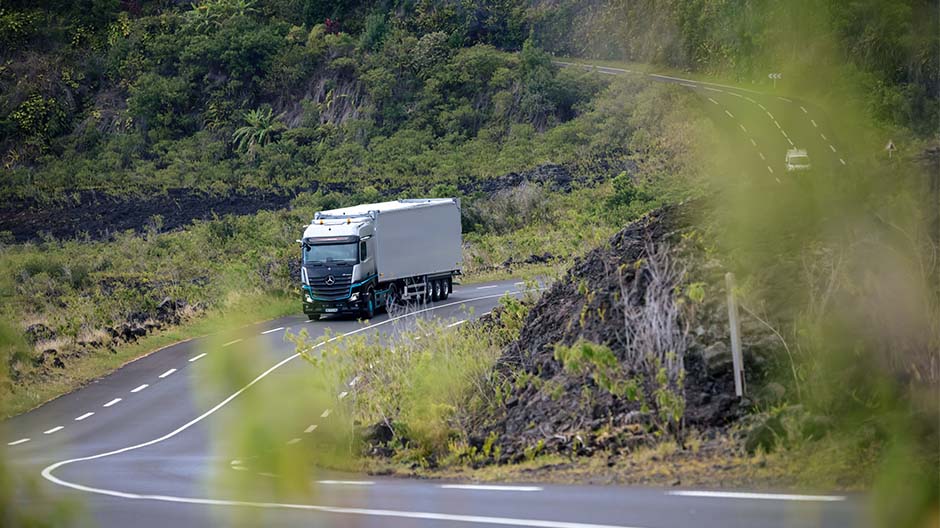
One of Gerald’s favourite routes leads through the lava field of Grand Brûlé. Here, the solidified lava stretches from the volcanic crater to the sea.
Gerald Victoire covers around 50,000 kilometres per year. That doesn't sound a lot compared to long-distance haulage on mainland Europe, but taking into account the infrastructure on Reunion, an average of 200 kilometres per day is a huge amount, especially when considering the traffic as well.
But Gerald Victoire doesn't let that phase him. "I get to spend every evening with my family but still feel like a genuine long-haul truck driver! We also get a lot of sunny days here, which is simply fantastic. I enjoy every day", says Gerald, smiling and letting the Actros move off again. Saint-Denis now lies behind him and the road ahead of him is clear again.
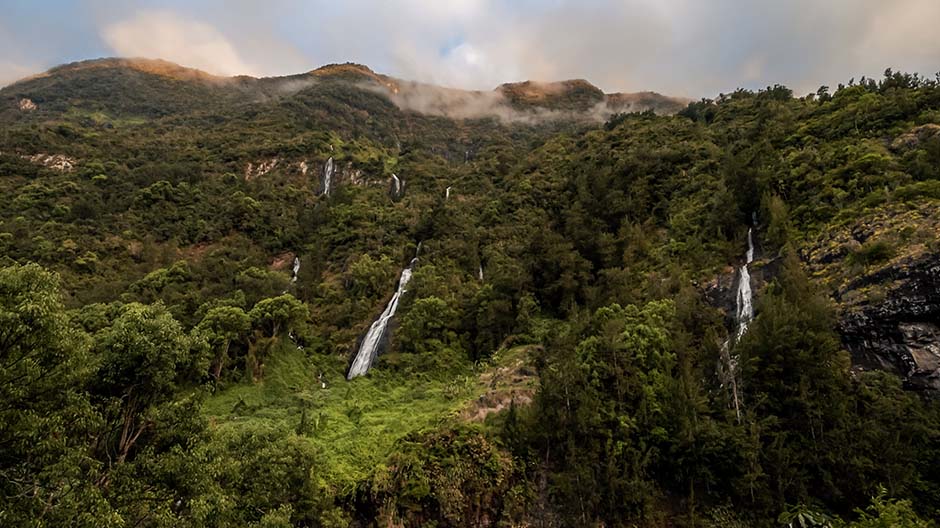
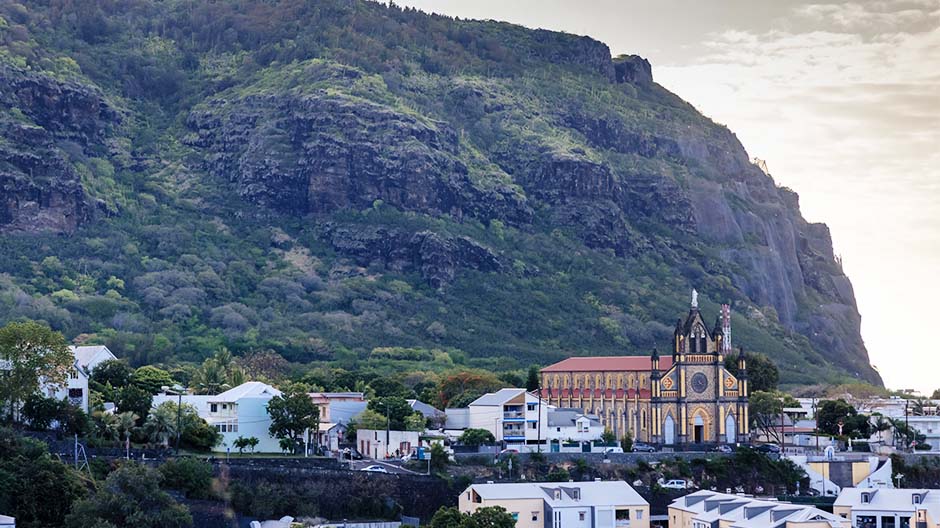
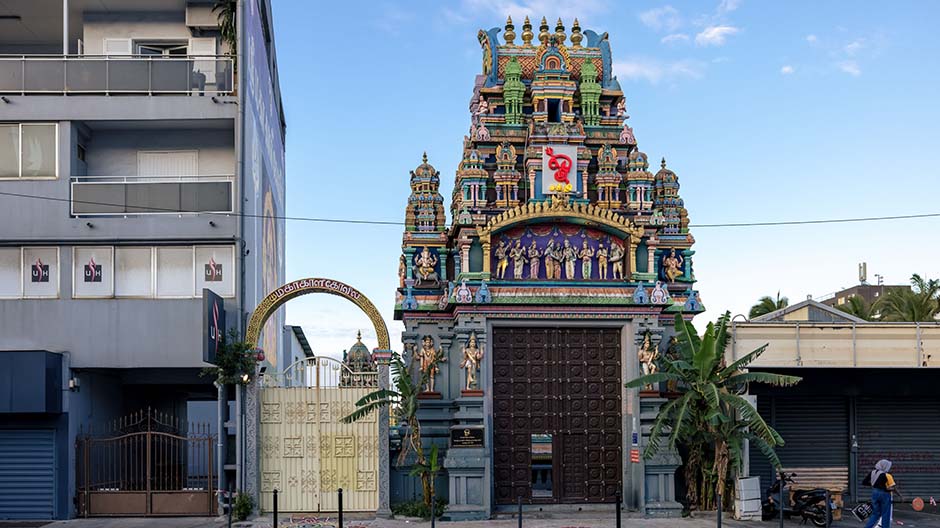
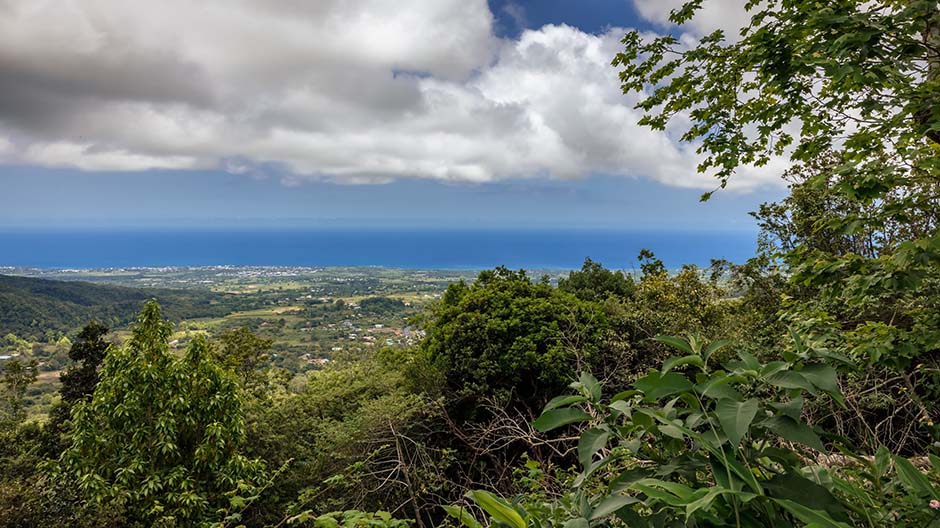
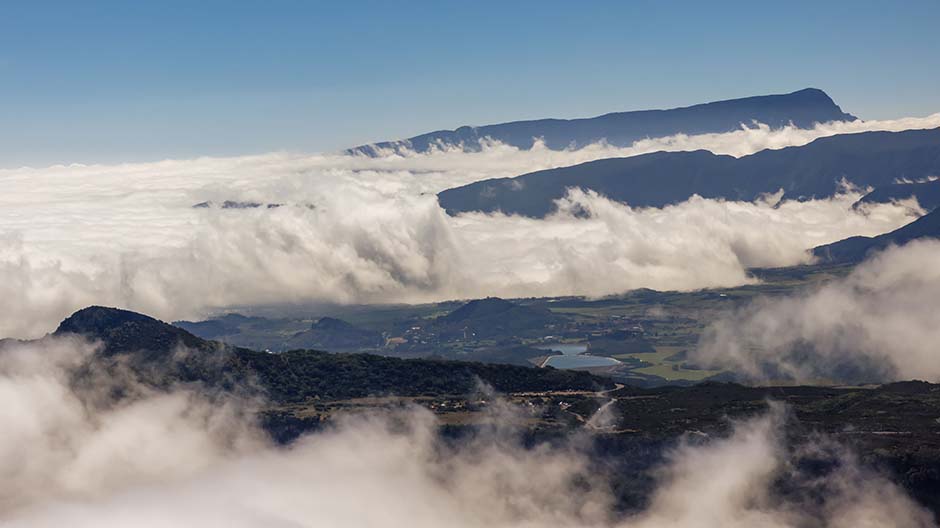
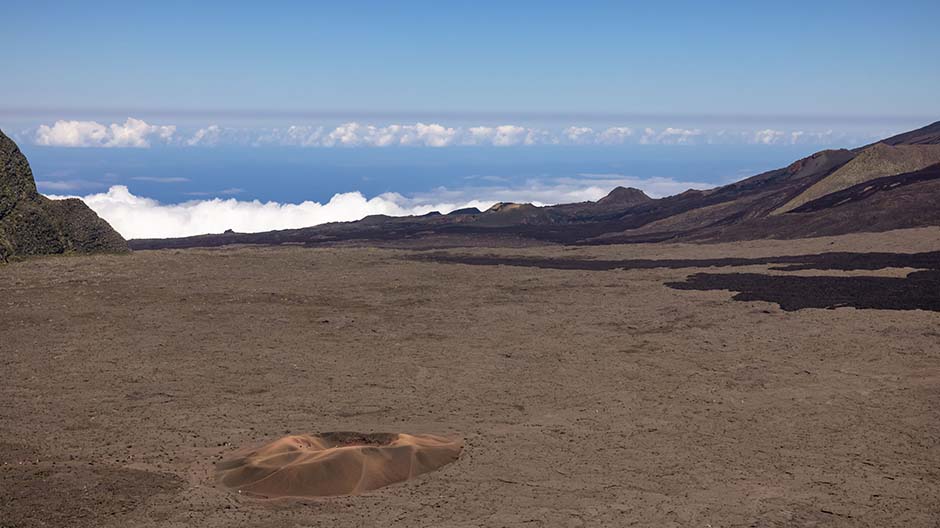
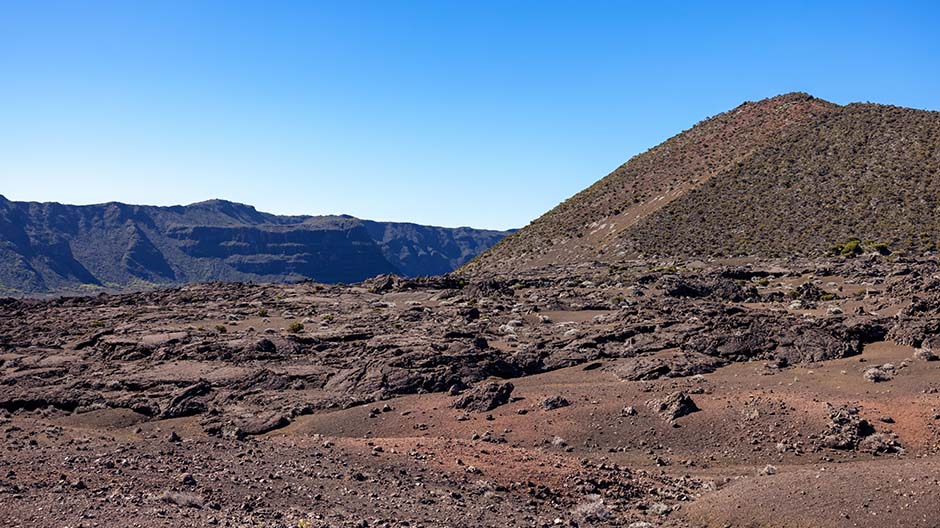
Photos and video: Alexander Tempel




Comment
Please log in to post a comment.
15 comments
Ein 1863er ist schon Top und dan "nur" 50.000 km im Jahr so mus das eigentlich auch sein dan hält das Fahrzeug ewig bei guter Pflege. Natürlich ist das bei den Strassen Mega Stressig.
Trotzdem Mega !!😇
Ein 1863er ist schon Top und dan "nur" 50.000 km im Jahr so mus das eigentlich auch sein dan hält das Fahrzeug ewig bei guter Pflege. Natürlich ist das bei den Strassen Mega Stressig.
Trotzdem Mega !!😇
Der Arbeitsplatz würde mir auch gefallen.
👍👍👍👍👌👌⛟😎
Der Arbeitsplatz würde mir auch gefallen.
👍👍👍👍👌👌⛟😎
Sehr gut gelungen der Bericht!!!👍😎🚛
Gruß in die schöne Ferne!!! Dominik 🚛😎👍
Sehr gut gelungen der Bericht!!!👍😎🚛
Gruß in die schöne Ferne!!! Dominik 🚛😎👍
Falls Gerald eine Urlaubsvertretung braucht bitte einfach meine Mobilnummer weitergeben. Ich mach das!
Falls Gerald eine Urlaubsvertretung braucht bitte einfach meine Mobilnummer weitergeben. Ich mach das!